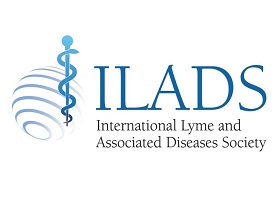TOUCHED BY LYME: An “evidence-based” definition of chronic Lyme disease

One of the most contentious issues in the so-called “Lyme wars” has been the question of whether a chronic form of Lyme disease exists.
On one side, the Infectious Diseases Society of America (and its adherents in medicine, government, and the insurance industry) flatly say that chronic Lyme doesn’t exist. Thus, there’s no need to test for it, treat it, or pay insurance benefits related to it.
The main problem with that viewpoint is that it kicks to the curb untold thousands of very sick people who continue to suffer from serious Lyme-related impairments, even after they’ve received the “standard” course of treatment.
Furthermore, up until now, there has been no generally accepted definition of chronic Lyme disease. It’s hard for potential researchers to get a handle on what they ought to look for.
The best that this first side has to offer is the problematic concept of Post-Treatment Lyme Disease Syndrome. Which, to put it mildly, the Lyme community finds severely lacking. (See: LYMEPOLICYWONK: Abandon “Post-Treatment Lyme Disease Syndrome” label.)
The other side of the Lyme question
On the other side of the issue is the International Lyme and Associated Diseases Society (ILADS). It’s an organization of doctors who treat the patients who are cast adrift by the IDSA’s Lyme viewpoint.
Now, eight ILADS physicians have co-authored an article in the journal Antibiotics, offering “an evidence-based definition” of chronic Lyme disease.
They are Drs. Samuel Shor, Christine Green, Beatrice Szantyr, Steven Phillips, Kenneth Liegner, Joseph Burrascano, Robert Bransfield, and Elizabeth Maloney.
Here’s the article’s abstract:
Objective: Chronic Lyme disease has been a poorly defined term and often dismissed as a fictitious entity. In this paper, the International Lyme and Associated Diseases Society (ILADS) provides its evidence‐based definition of chronic Lyme disease. Definition: ILADS defines chronic Lyme disease (CLD) as a multisystem illness with a wide range of symptoms and/or signs that are either continuously or intermittently present for a minimum of six months. The illness is the result of an active and ongoing infection by any of several pathogenic members of the Borrelia burgdorferi sensu lato complex (Bbsl). The infection has variable latency periods and signs and symptoms may wax, wane and migrate. CLD has two subcategories, CLD, untreated (CLD‐U) and CLD, previously treated (CLD‐PT). The latter requires that CLD manifestations persist or recur following treatment and are present continuously or in a relapsing/remitting pattern for a duration of six months or more. Methods: Systematic review of over 250 peer reviewed papers in the international literature to characterize the clinical spectrum of CLD‐U and CLD‐PT. Conclusion: This evidence‐based definition of chronic Lyme disease clarifies the term’s meaning and the literature review validates that chronic and ongoing Bbsl infections can result in chronic disease. Use of this CLD definition will promote a better understanding of the infection and facilitate future research of this infection.
You can read the whole article here.
TOUCHED BY LYME is written by Dorothy Kupcha Leland, LymeDisease.org’s VP and Director of Communications. She is co-author of When Your Child Has Lyme Disease: A Parent’s Survival Guide. Contact her at dleland@lymedisease.org.




















We invite you to comment on our Facebook page.
Visit LymeDisease.org Facebook Page